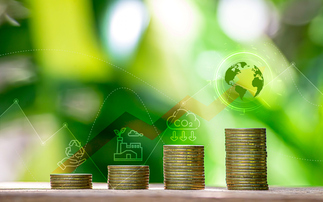As governments across the world seek to rebuild their shattered economies, they have announced significant spending plans to generate growth.
Across the globe, this increased spending has had a similar flavour, focusing on areas such as infrastructure development and promoting a more sustainable economy, and mining is likely to have an important role in these spending programmes.
With interest rates already at record lows, policymakers have recognised that monetary policy alone is not enough and have focused on fiscal policy to boost growth. In the face of the Covid-19 outbreak, global governments have created vast stimulus packages - the €750bn European Recovery fund, for example, or the $2trn package laid out by the CARES (Coronavirus Aid, Relief, and Economic Security Act) Act or the 4trn yuan ($564bn) stimulus package from China.
RSMR rebrands SRI range amid fund ratings overhaul
These deals have often focused on building more sustainable growth for the future. That means improving infrastructure and ‘greening' future development. The European Green Deal, for example, seeks to "boost the efficient use of resources by moving to a clean, circular economy", "restore biodiversity and cut pollution" with the ultimate aim of no net emissions of greenhouse gases by 2050 and de-linking economic growth from resource use.
Green policies
This is a major support for the mining sector in the coming years. For example, green policies should create demand in areas such as renewables, electric vehicles and charging infrastructure. This has a significant knock-on effect in mining demand. Electric vehicles require lithium-ion batteries, cathode and anode active materials as well as constituent metals, lithium and cobalt. They also use other vital raw materials such as cobalt, nickel, magnesium, copper and aluminium. Widespread adoption of electric vehicles could vastly increase demand in these areas, and we would also expect to see increased demand for copper as governments look to invest in the grid to support electrification and the energy transition.
It is also improving the mining process: European policymakers in particular have become increasingly focused on ensuring the manufacturing process itself is green. This year, we have seen a number of companies make major commitments to their recycling programmes: we expect recycled steel production to increase, with the steel industry also looking at how they can reduce their carbon emissions over time. This is part of creating a brighter more sustainable mining sector in future.
Infrastructure
Infrastructure development is an increasing focus across the globe. From the UK Government's ‘build, build, build' strategy, to Beijing's ‘new infrastructure' plans, there is an instinct to seize the opportunity of the Covid-19 crisis to build back better.
Many countries were already struggling with an infrastructure gap: the World Economic Forum suggests the US is 30 years behind its peer group in infrastructure development. A recent Deloitte white paper said that a combination of economic pressure and new opportunities would spur government and industry to find new ways to innovate on infrastructure.
What is the best way to sift through greenwashing and find an ESG fund aligned with your interests?
This is creating new demand in the mining sector and has already been seen in improved commodities pricing. This is particularly true for China: in spite of its recent shift to a more consumer-led economy, the country is still the world's biggest buyer of industrial commodities and recent indicators of construction activity suggest buoyant demand8.
That said, this current round of infrastructure development may look different to that employed in the wake of the global financial crisis. This time, the Chinese government has focused on technology, mass transport and power infrastructure. While there will undoubtedly be demand for traditional building materials such as iron ore and steel, this is also creating demand in new areas. At the same time, the mining sector is well hedged, with gold producers accounting for a significant portion of the mining sector and gold having been a major beneficiary of ‘safe-haven' demand and the aforementioned record low interest rate environment.
The mining sector
The mining industry has been through a significant process of readjustment in recent years, with companies improving their balance sheets, paying down debts and cutting back on capital expenditure. The result is a lean sector where supply is well-managed.
The mining sector should be a major beneficiary of the fiscal spending boom we are seeing in response to the Covid-19 outbreak. This not only benefits traditional building materials such as iron ore, but also areas such as copper, lithium and cobalt as governments seek to progress their green agendas. Most importantly, recent improvements in the management of mining companies have left them poised to take advantage of improving demand with the strong cashflow of the sector set to be shared with investors.
Evy Hambro is the lead manager of the BGF World Mining fund and BGF World Gold fund







